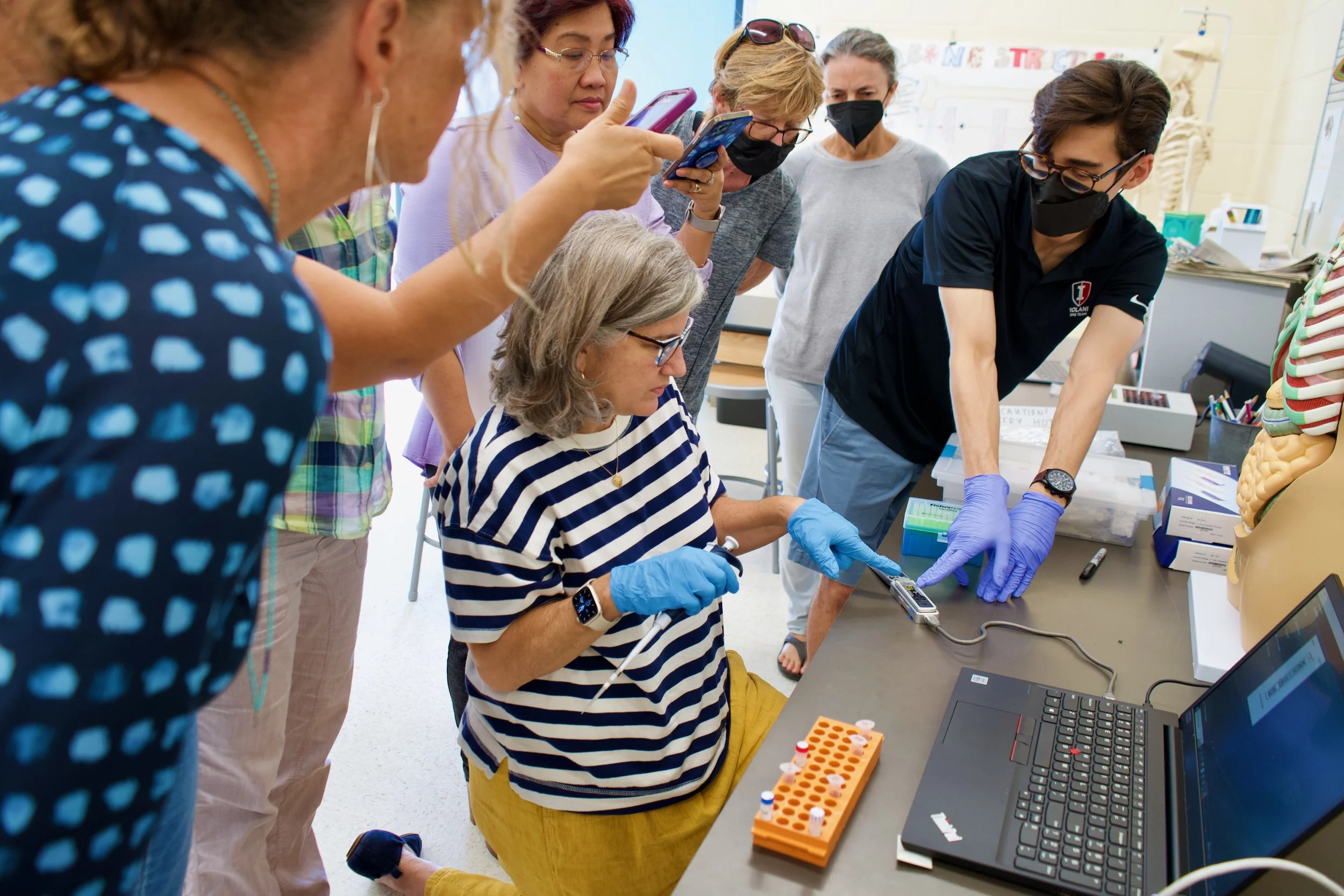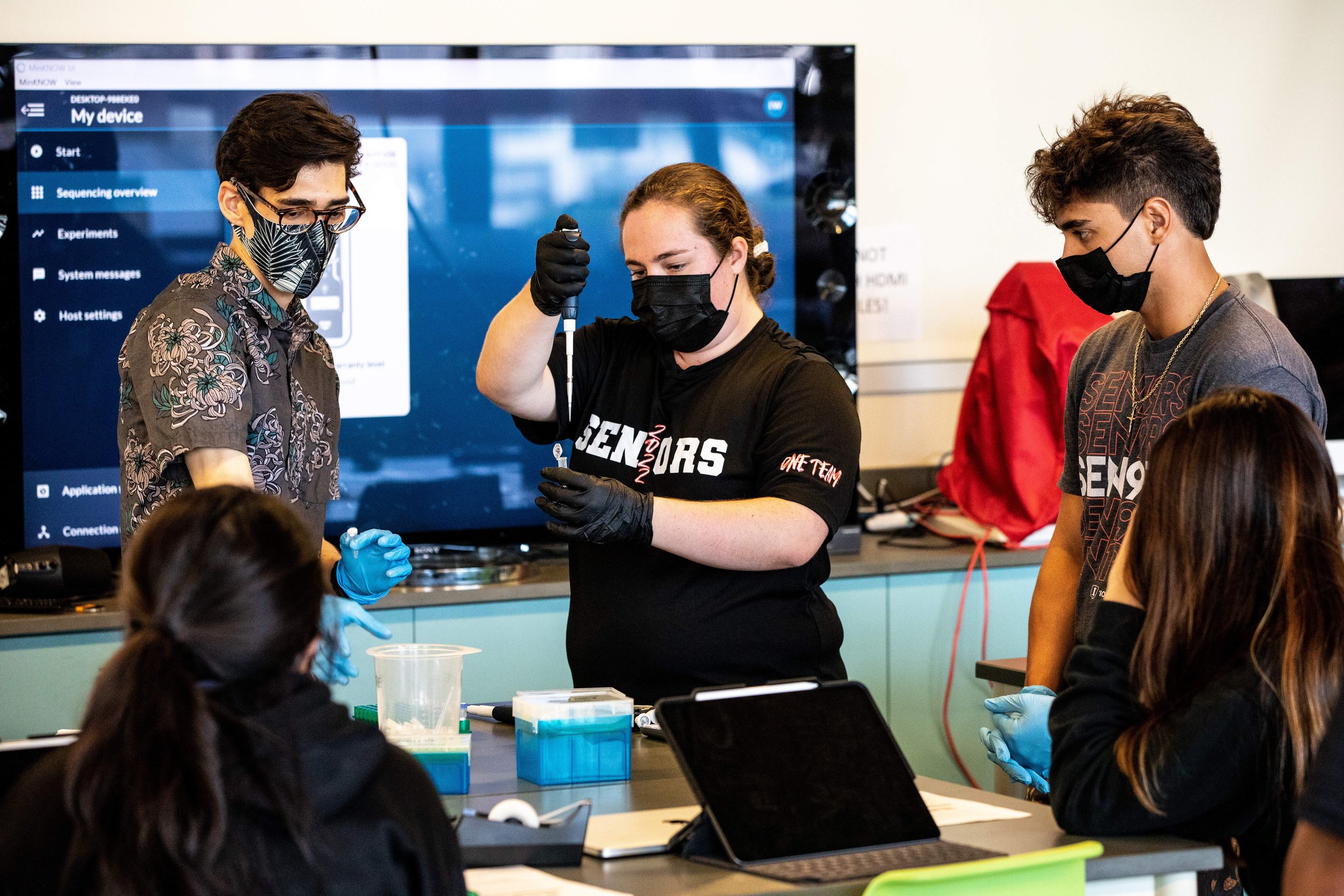by Sarah Gallardo, ʻAiea High School Medical Biotechnology student
Teacher: Mrs. Mary Margaret Peterson
What did you do on the four days of the project?
For four days we worked with instructors from ‘Iolani and UH to identify the type of variant of twelve different COVID-19 samples which originated throughout the state of Hawai’i around late June to early July of 2021. Using the given genetic material, we created a mixture to produce a single nucleotide overhang where the barcodes, which identifies each sample, can be attached. In the next step we attached distinct barcodes assigned to each of the twelve samples.
Students preparing a sequence library for barcoding.
Photo credit: Mary Margaret Peterson
Then we combined all of the barcoded libraries into a single mixed library. Before putting the samples through a DNA sequencer, we had to get the DNA in its purest form which we did with a process called DNA purification. We then sequenced the library with nanopore sequencing. This is where “a nanopore, a synthetic membrane channel, allows a strand of DNA through its pore. As the molecule passes, changes in the electrical field are detected.” This is decoded resulting in a DNA sequence.
Why is it important to track variants in Hawaiʻi and around the world?
We can identify which variants are more transmissible than others thus becoming more proactive when controlling outbreaks. We can understand how the coronavirus arrives in our community and how it moves around within the state. The data retrieved from genomic surveillance helps track mutations occurring within the SARS-CoV-2 genome as it transfers from infected people.
What variants did your class find?
In viewing our results, we found
one new case of Gamma,
three cases of Alpha,
seven samples of Delta,
and one of Mu.
This proves that during late June and early July of 2021 the Delta variant started to become the most transmissible and common variant in the population.
Student preparing sample for loading on the MinION sequencer.
Photo credit: E. Tong
Write about how you felt completing the project. What did you learn?
This experience involved an immense amount of complex thinking and being exposed to new concepts and scientific terminology. I’m grateful that I had this opportunity to partake in a process that most people my age don’t get to experience until college. Through the guidance of Mr. Tong and Mr. Hill, I became more aware of how the coronavirus is traveling within the state of Hawai’i and the importance of genomic surveillance. Knowing that my class and I were contributing data to our current health crisis is extremely rewarding.






